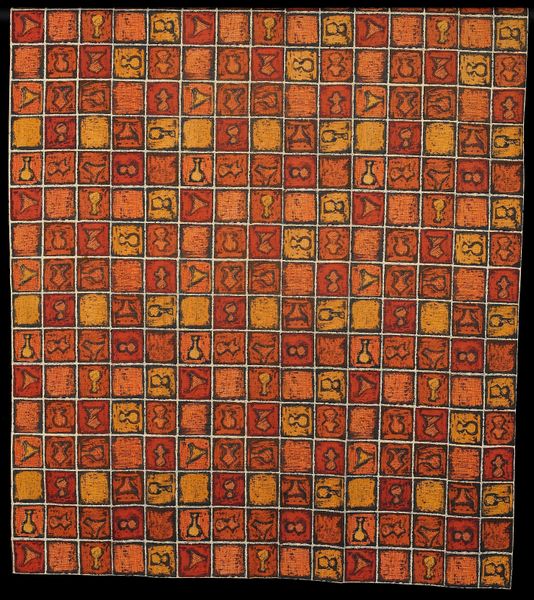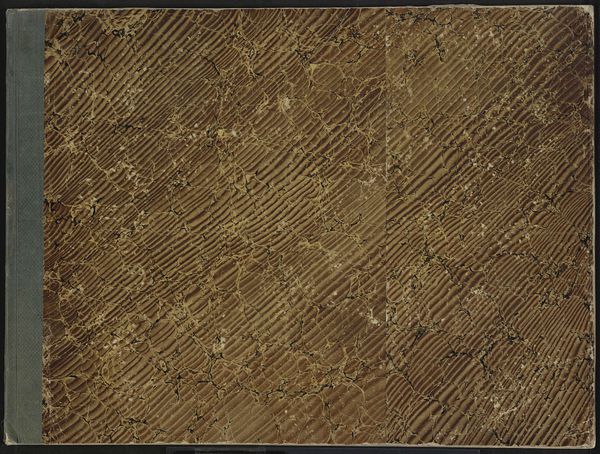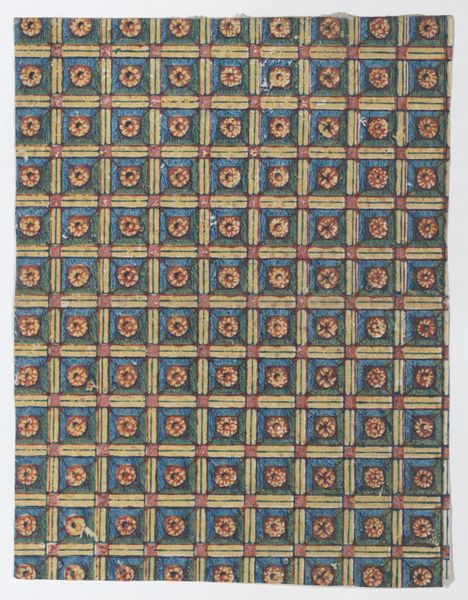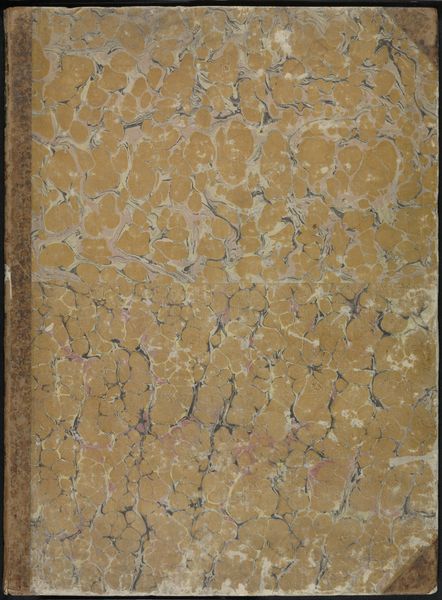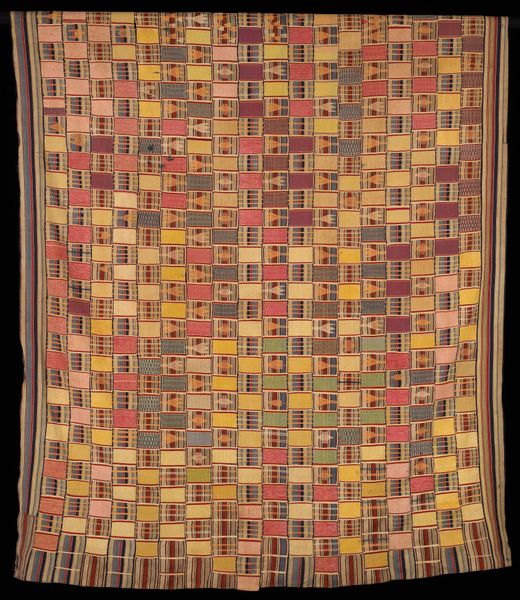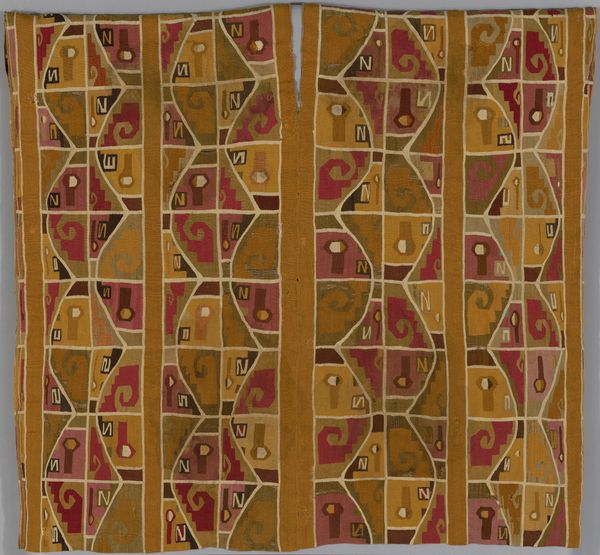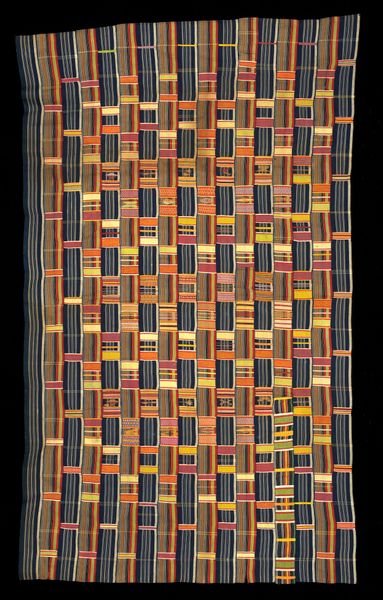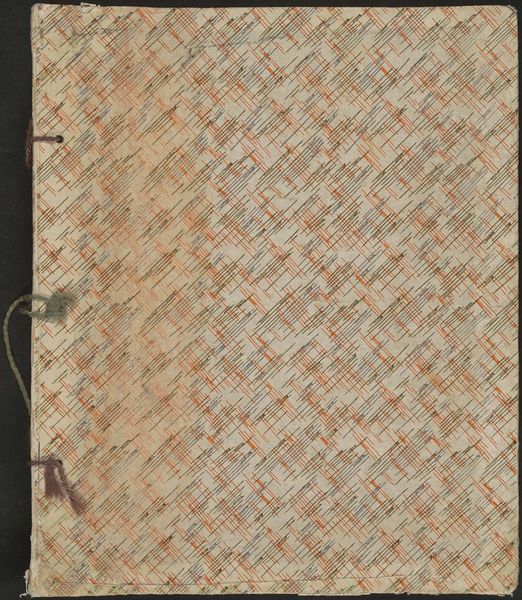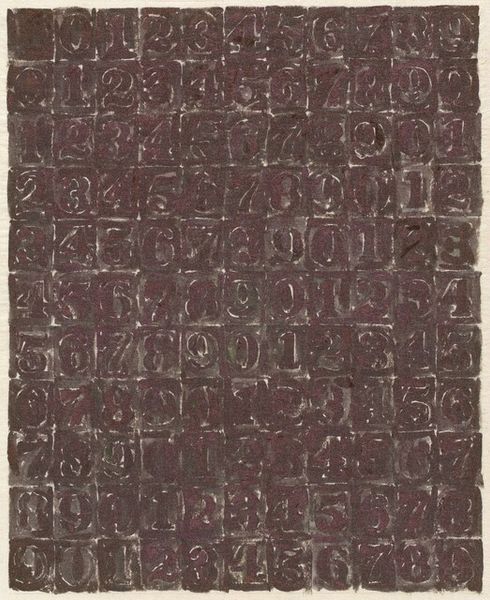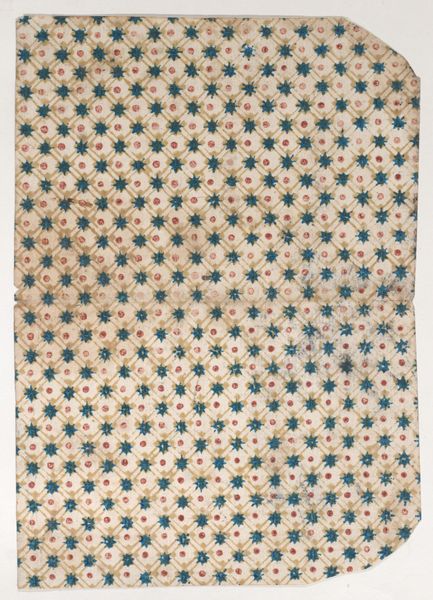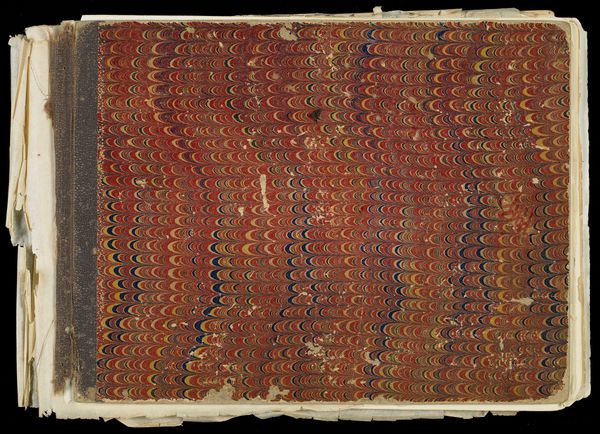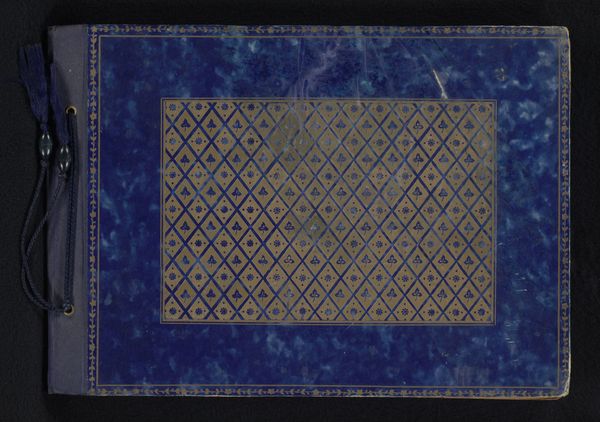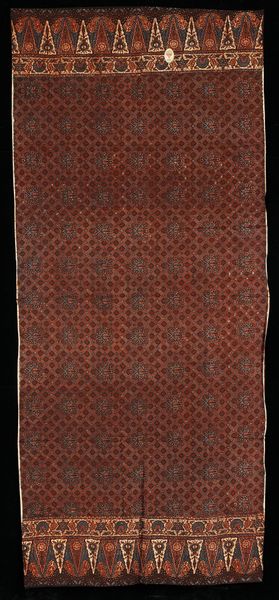
textile, cotton
#
textile
#
geometric pattern
#
abstract pattern
#
organic pattern
#
geometric
#
vertical pattern
#
abstraction
#
pattern repetition
#
cotton
Dimensions: 78 1/4 x 57 9/16 in. (198.76 x 146.21 cm)
Copyright: Public Domain
Curator: Looking at "Hoggar," a textile from around the 1950s, a piece of cotton now residing here at the Minneapolis Institute of Art, what strikes you? Editor: Immediately, this evokes a sense of coded language or a complex symbolic system. It's like gazing upon an ancient Rosetta Stone rendered in earth tones. Curator: Interesting. Considering it's cotton, likely produced through industrial means, this suggests a merging of tradition and modernity in its very manufacture. We have here a grid-like textile integrating repetitive geometric figures that resemble abstract alphabets of sorts. How do you interpret these figures? Editor: I read these not as strict representations but as archetypes or distillations of meaning. The repetition reinforces the idea of ingrained cultural values, each little symbol holding a kernel of shared understanding within its geometric frame. It speaks of rituals. Curator: You're suggesting, then, that mass production doesn’t necessarily strip away cultural value? The printed image still speaks with as strong a symbolic voice? I wonder what were the labour conditions for creating such textile art at mid-century. Editor: Precisely! Perhaps it's not so much about the conditions as the intention imbued within the designs themselves. Regardless of factory setting, the designer is communicating specific values or histories. They aren't simply printing fabric. Each cell reverberates of communal expression. Curator: That is well stated, but also to ignore questions of workers conditions and exploitation would only further blind us to power dynamics present in a textile's making. What are your views on textiles displayed in a gallery, out of their utility setting? Editor: Indeed, context matters greatly! But in presenting it here, detached from direct utilitarian use, it allows us to focus primarily on its function as a keeper of encoded, ancestral narratives. In doing so we, today, too participate in this generational storytelling, and re-evaluating its impact. Curator: Fair enough. Though, perhaps through better researching such aspects can further inform or reveal details or unknown elements embedded in textile design and production. It adds layers of insight to the reading of signs. This reflection reveals for me an interesting tension embedded within the making and its appreciation. Thank you. Editor: It's the push and pull of materials and cultural interpretation that makes encounters like this so memorable. It allows the language of forms to echo beyond our time here in these halls.
Comments
No comments
Be the first to comment and join the conversation on the ultimate creative platform.
